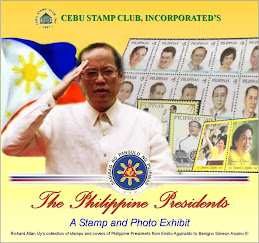Today in Philippine History (Philatelic Edition Series 3):
October 25, 1857
Juan Luna de San Pedro y Novicio Ancheta (October 25, 1857 – December 7, 1899) a Filipino painter, sculptor and political activist of the Philippine Revolution, was born in Badoc, Ilocos Norte.
He was the son of Joaquin Luna de San Pedro y Posada and Laurena Novicio y Ancheta, who had seven children.
He studied at the Ateneo Municipal de Manila where he obtained his Bachelor of Arts degree. Luna excelled in painting and drawing and was influenced by his brother Manuel who was a better painter according to Jose Rizal. He enrolled at the Escuela Nautica de Manila (now Philippine Merchant Marine Academy) and became a sailor. He took drawing lessons under Lorenzo Guerrero of Ermita, Manila, who urged him to travel to Madrid to further pursue his work.
Luna enrolled in the Academy of Fine Arts (Academia de Dibujo y Pintura) in Manila where he was influenced and taught how to draw by the Spanish artist Agustin Saez.
In 1877, Juan and his brother Manuel traveled to Europe, where Manuel studied music and Juan painting. He entered the Escuela de Bellas Artes de San Fernando, and became friends with the painter Don Alejo Vera. He decided that it would be much better to work with Vera than learning in school.
Luna won the gold medal for his masterpiece titled Spolarium, in the 1884 Madrid Exposition of Fine Arts, along with the silver win of fellow Filipino painter Felix Resurreccion Hidalgo.
Members of the Propaganda Movement celebrated the two victories and gave a toast for the two painters' good health and to the brotherhood between Spain and the Philippines.
The Spolarium is presently displayed at the National Museum in Manila.
Juan Luna established himself in Paris and married Maria de la Paz Pardo de Tavera. Doubting the unfaithfulness of his wife, and in a fit of jealousy, he shot her and her mother to death in September 1892. He was tried by a French court but was acquitted of the charges on February 8, 1893, on the grounds of a crime of passion.
In 1894, he returned to the Philippines after an absence of almost 20 years. He and Antonio, who became a fearless and well-respected general in the Philippine Revolution were arrested by the Spanish authorities for being members of the Katipunan on September 16, 1896.
The Spanish court pardoned him on May 27, 1897 and was released from prison. He traveled back to Spain in July 1897.
He was appointed by the Philippine revolutionary government in 1898 as a member of the Paris delegation which was working for the diplomatic recognition of the República Filipina (Philippine Republic).
In 1899, upon the signing of the Treaty of Paris (1898), He was named a member of the delegation to Washington, D.C. to press for the recognition of the Philippine government.
Juan Luna died of heart attack in Hong Kong on December 7, 1899 while traveling from Europe after hearing of Gen. Antonio Luna's death in the hands of fellow revolutionaries.
(Design, concept, stamps and research: Richard Allan B. Uy) All rights reserved
Photo credit: Gateway Gallery




















No comments:
Post a Comment